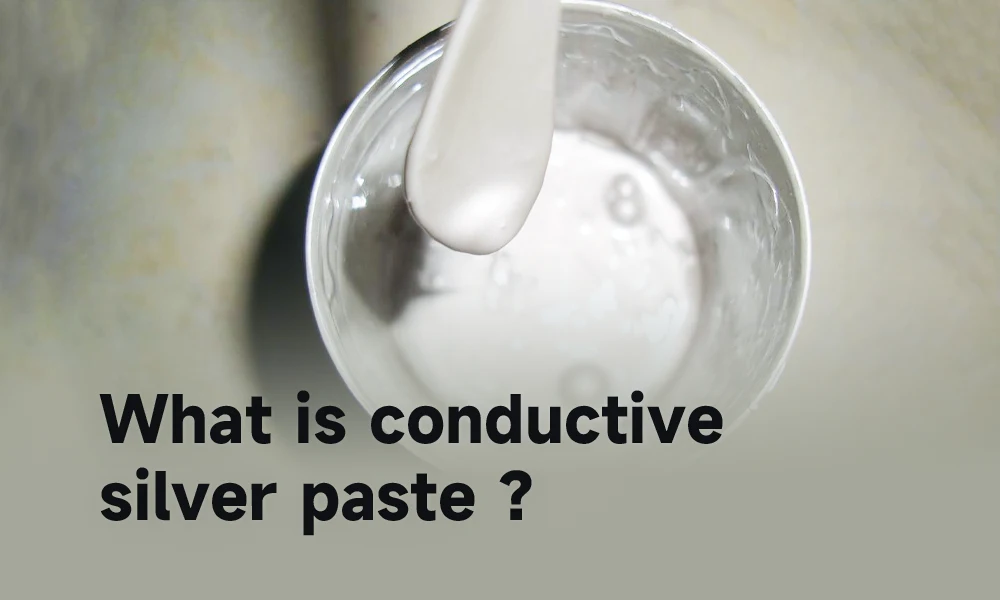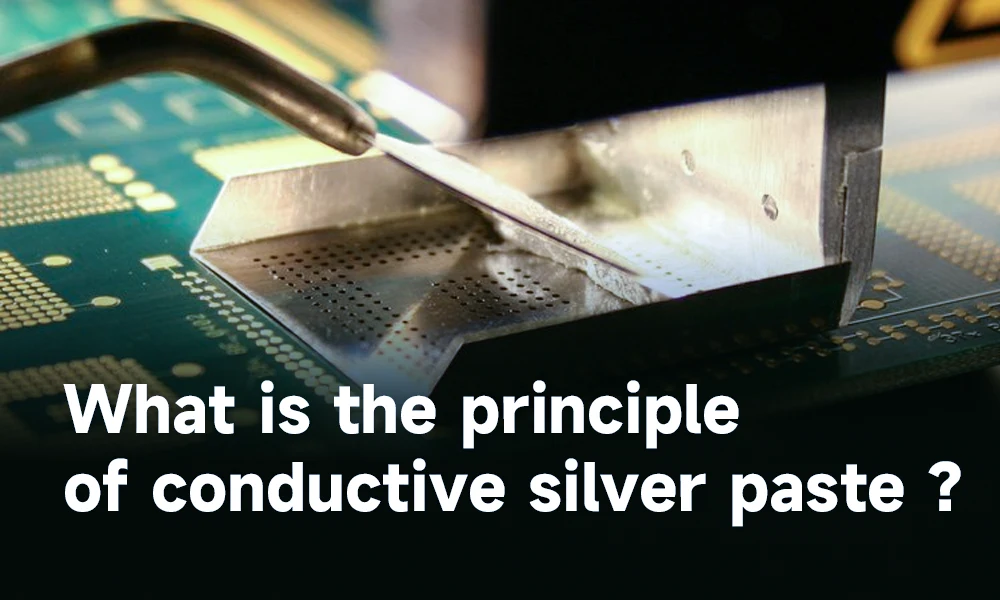Conductive silver paste refers to the silver paste that is printed on conductive substrates so that it has the ability to conduct current and eliminate accumulated static charges. It is generally printed on non-conductive substrates such as plastic, glass, ceramics or cardboard.
Conductive silver paste is a commonly used conductive material, widely used in printed circuit boards, solar cells and other fields.
This article will give a comprehensive introduction to the relevant content of conductive silver paste: history and development, composition, method of use and manufacturers.
What is conductive silver paste?
Conductive silver paste is a mixture of silver particles, solvents, dispersants and stabilizers, etc., used to form conductive layers or conductive structures in electronic components, circuits and conductive applications.
Conductive silver paste has excellent conductivity and good adhesion, and is suitable for applications in various electronic fields, such as printed circuit boards, thin-film solar cells, touch screens, RFID tags, etc.
According to the particle size, concentration, additives and application requirements of silver particles, conductive silver paste can be divided into traditional conductive silver paste, nano conductive silver paste, high stability conductive silver paste, stretchable conductive silver paste, etc.

The development history and application of conductive silver paste
-In 1954, British scientist C.F. Powell first reported the method of suspending silver particles in an organic solvent to prepare a conductive paste.
-In 1960, researchers at Bell Laboratories in the United States began to study silver particles as conductive adhesives in electronic packaging materials.
-In 1970, conductive silver paste began to be widely used in the electronics industry for the manufacture of printed circuit boards and other electronic components.
-With the development of the electronics industry, the preparation process of conductive silver paste has been gradually improved, and the performance has been improved. In 1990, the application of conductive silver paste was further expanded, including the use in touch screens, solar cells and other fields. With the development of nanotechnology, researchers began to study nanoscale conductive silver paste to improve the conductivity and applicability.
-In 2010, the application of conductive silver paste in flexible electronics, organic optoelectronics and other fields gradually increased, providing key material support for emerging technologies.
-In 2020, conductive silver paste will continue to play an important role in the fields of 5G communications, wearable devices, and flexible displays. At the same time, research will continue to advance to meet challenges in environmental protection and cost.
-Benefiting from the soaring demand in the photovoltaic market, the global conductive silver paste industry will enter a period of rapid growth in 2021.
What is conductive silver paste made of?
Most of the conductive silver paste is a paste material that is mainly composed of conductive phase (silver), binder phase, and organic vehicle in a certain proportion and uniformly dispersed. Some electronic pastes also add some additives to improve performance. details as follows:
1. Organic vehicle: The viscosity and leveling of the organic vehicle in the electronic paste seriously affect the rheological characteristics, printing performance and adhesion strength of the paste and the substrate. In addition, additives such as thixotropic agents, active agents, gelling agents, leveling agents, and defoamers can change the performance of the organic carrier, and a suitable organic carrier can help improve the performance of the electronic paste.
2. Bonding phase: organic bonding phase is often used in low-temperature sintered electronic paste, inorganic glass-type bonding phase is often used in high-temperature sintering electronic paste, and the main components of glass-type bonding phase are some metals and their oxides. The role of the binder phase in the electronic paste is to improve the conductivity and mechanical properties of the conductive film layer, and to ensure the bonding strength between the conductive film layer and the substrate.
3. Conductive phase: The conductive phase of the conductive silver paste is silver, which is connected to each other to form a conductive network during the sintering process of the silver particles, which endows the conductive silver paste with conductivity. In addition to silver powder, the most commonly used conductive phases in electronic pastes are carbon, metal powder and metal oxides. Metal powders—Cu, Ni, Zn, Al, Au, etc. have excellent electrical conductivity.
What is the principle of conductive silver paste?

Conductive silver paste is a conductive material whose main components are nano-silver particles and organic solvents. The conductive principle of conductive silver paste is to achieve the purpose of conductivity through electron transfer between silver particles. When electrons flow between the silver particles, a continuous electron path is formed, enabling electrical conduction.
The conductivity of conductive silver paste is mainly affected by factors such as the shape, size, and concentration of silver particles. In general, the smaller the size and the higher the concentration of the silver particles, the better the conductivity.
How long does it take for silver conductive paste to dry?
Curing time means that the conductive silver paste reaches a solidified state after being kept at the curing temperature for a certain period of time. Generally, the curing time of the conductive silver paste is between 110 minutes and 60 minutes. If the curing time is too short, the conductive silver paste will not be completely cured, which will affect its conductivity and durability; if the curing time is too long, the conductive silver paste will be sintered, resulting in a decrease in the conductive performance of the conductive silver paste.
How to use conductive silver paste?
The use methods of conductive silver paste mainly include coating, spraying and printing. Specifically, you can follow these steps:
(1) Stir the conductive silver paste evenly to ensure that the silver particles are evenly dispersed.
(2) Coat the conductive silver paste on the surface of the material that needs to be conductive. Pay attention to the thickness and uniformity of the coating when coating to ensure that the electrical conductivity meets the requirements.
(3) Spray the conductive silver paste on the surface of the material that needs to be conductive. Pay attention to the distance and spraying speed when spraying to ensure that the silver particles are evenly dispersed on the surface of the material.
(4) Print the conductive silver paste on the surface of the material that needs to be conductive. When printing, it is necessary to select the appropriate printing process and printing equipment to ensure that the printing quality and electrical conductivity meet the requirements.
It should be noted that during the use of conductive silver paste, care should be taken to avoid aggregation or precipitation of silver particles, so as not to affect the conductivity. At the same time, when storing and using conductive silver paste, pay attention to sealing, avoiding light and moisture, so as to prolong its service life.

Conclusion
As the basic material of the electronic information industry, conductive silver paste has been widely used in various fields such as aviation, chemical industry, printing, construction and military with the characteristics of high quality, high efficiency and advanced technology.
Conductive silver paste is a mixture of silver particles, solvents, dispersants and stabilizers, etc., used to form conductive layers or conductive structures in electronic components, circuits and conductive applications.
Organic vehicle
Bonding phase
Conductive phase
The use methods of conductive silver paste mainly include coating, spraying and printing.










